Introduction
In ElastiCenter to create an extra Pool in a particular NODE, we have to perform either one of these:
- Adding a JBOD to that NODE, or
- Adding additional disks to the JBOD already attached to the NODE.
But what if
- We don’t have an extra JBOD, or
- The JBOD is been used in some another ElastiCenter or
- We don’t have extra Disks for the JBOD.
In that case we either had to purchase extra disks or a new JBOD itself which might be a bit costly. But what if I say that we do not have to do any of these and still we can create a Pool for your node. Want to know how, lets find out.
Pools over iSCSI Lun
In ElastiCenter 2.0.0 we have a feature that allows adding a iSCSI Luns to a NODE, which later used to create POOL. In order to do so we have a bunch of steps that need to be performed on ElastiCenter 2.0.0.
NOTE:
- The following steps are performed using two different ElastiCenter setup
- The iSCSI Lun from one of the ElastiCenter is used as a Disk in another ElastiCenter
Configuration Steps
STEP 1:
- In Elasticenter, got to HA Groups section and click on Tasks action tab.
-
In the dropdown you will get a list of tasks, select Manage iSCSI Targets.
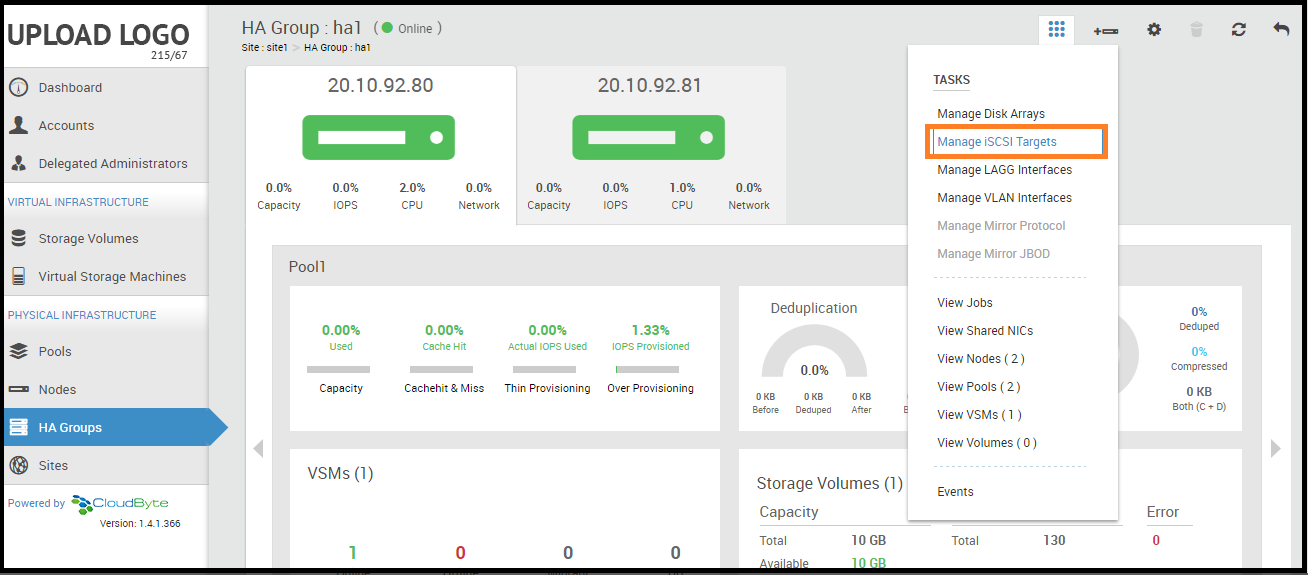
STEP 2:
-
In the iSCSI Targets page select the Discover iSCSI Targets option.
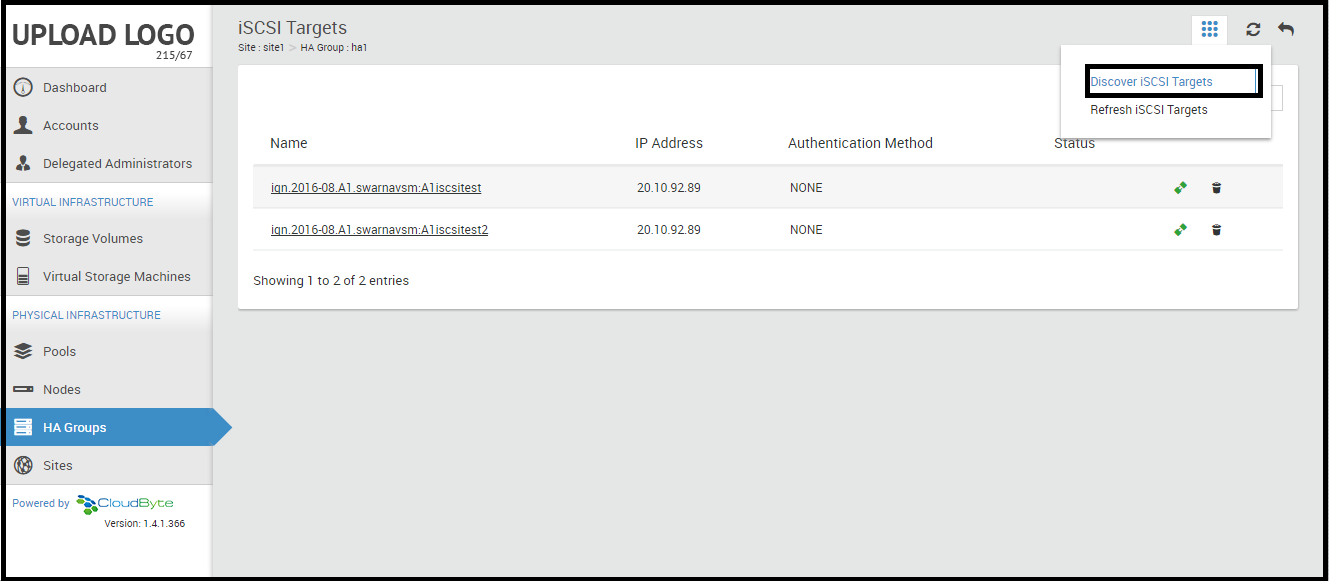
-
Fill the Target IP Address (in this case VSM IP Address) and Authentication Method (Can be CHAP or MUTUAL CHAP) you want to use.
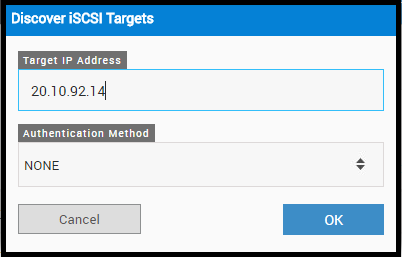
STEP 3
- Once the above step is done the iSCSI Lun will be added to the iSCSI Targets.
-
Now connect to the iSCSI Lun in order to use it.
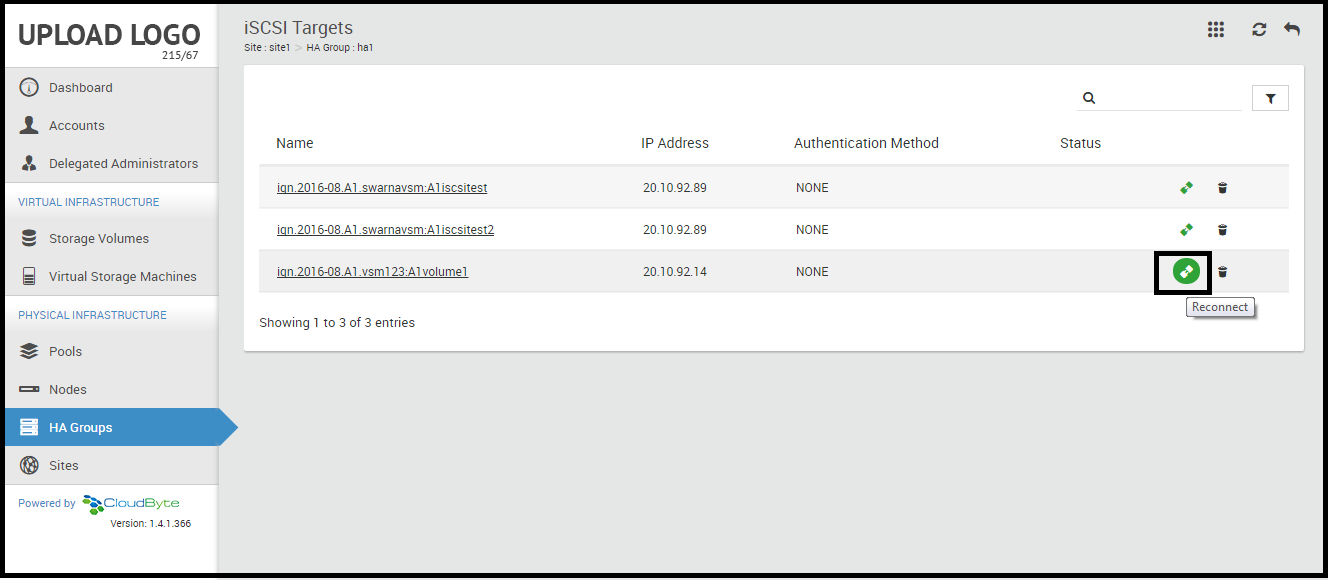
-
You will get the following Job status after the iSCSI Target Lun is connected.
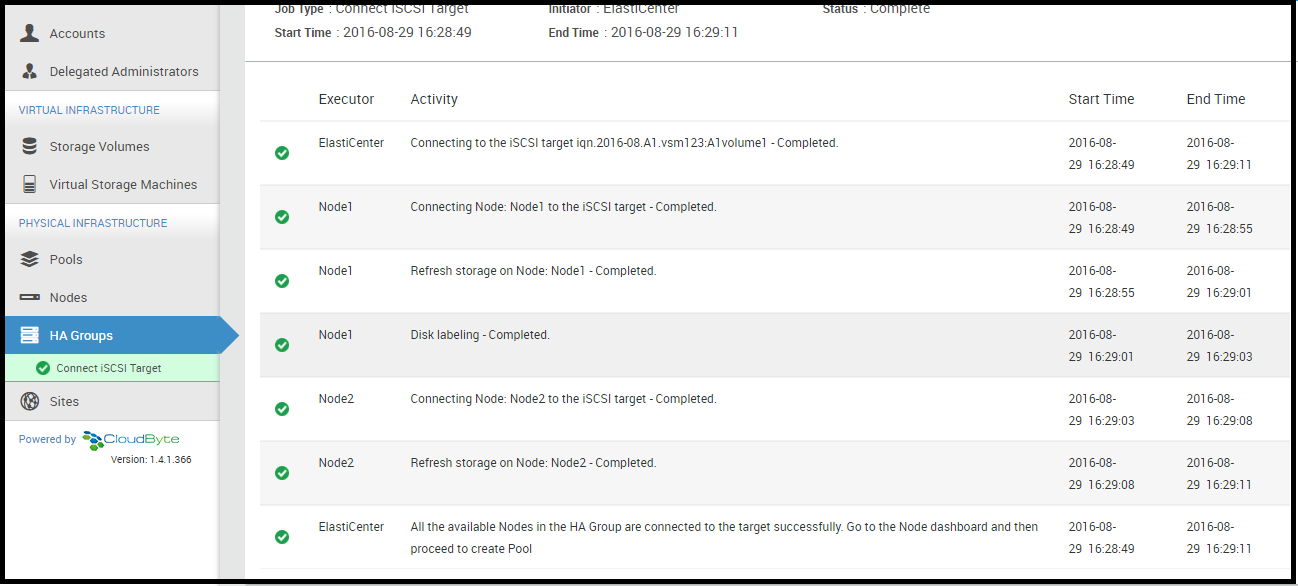
STEP 4
-
Now go the the NODE, and check the newly added iSCSI Lun in the Shared Storage section.
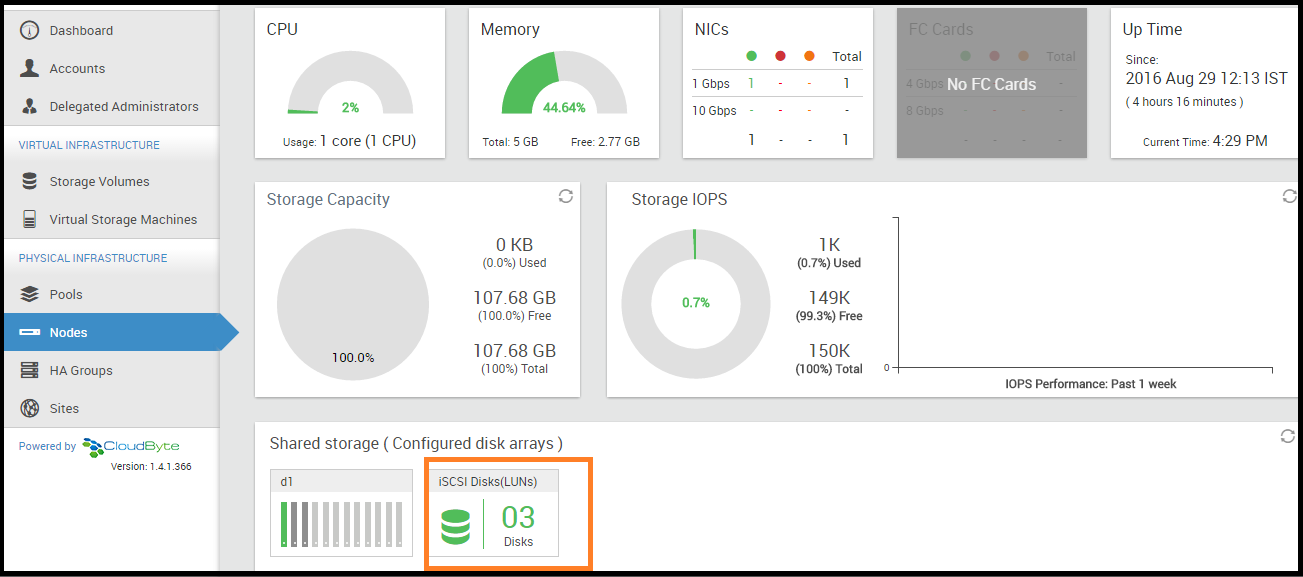
-
If the disk is shown as above then proceed with the creation of a POOL.
Why to use it ?
- Using this feature we can add multiple iSCSI Lun of different Vendor’s like Solidfire, Nexenta, etc; to the ElastiCenter and thus can use it as a Data Disk or for some other purposes too.
